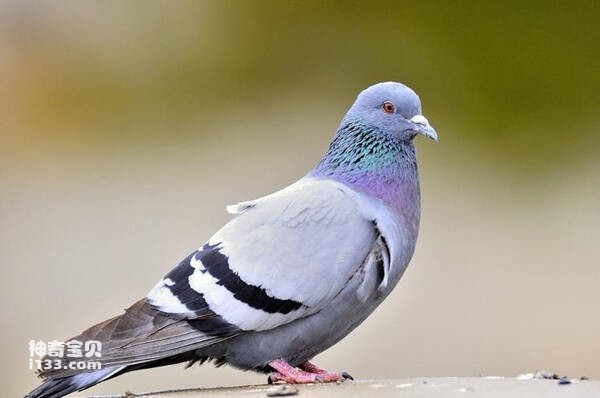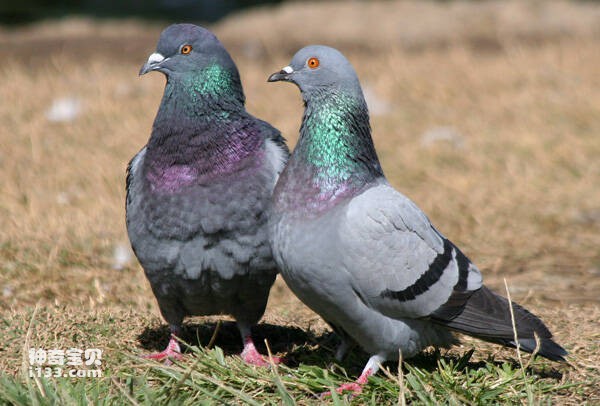Columba livia
IUCN
LCBasic Information
Scientific classification
- name:Columba livia
- Scientific Name:Columba livia,Rock Pigeon
- Outline:Landfowl
- Family:P.Order P.family P.genus
Vital signs
- length:29.5-35.5CM
- Weight:194-347g
- lifetime:15-20 years
Feature
There are metallic green and purple flashes on the lower neck and upper chest
Distribution and Habitat
Place of origin: Afghanistan, Albania, Algeria, Andorra, Armenia, Austria, Azerbaijan, Belarus, Belgium, Bhutan, Bosnia and Herzegovina, Bulgaria, Cape Verde, Chad, China, Croatia, Cyprus, Czech Republic, Egypt, Estonia, Ethiopia, Faroe Islands, Finland, France, Georgia, Germany, Greece Greece, Hungary, Iceland, India, Iran (Islamic Republic of), Iraq, Ireland, Israel, Italy, Jordan, Kazakhstan, Kyrgyzstan, Latvia, Lebanon, Libya, Lithuania, Luxembourg, Macedonia, Mali, Malta, Mauritania, Moldova, Monaco, Mongolia, Montenegro, Morocco, Myanmar, Nepal, Norway, Oman, Pakistan, Palestine, Poland, Portugal, Qatar, Romania, Russian Federation, SAN Marino, Saudi Arabia, Serbia, Slovakia, Slovenia, Spain, Sudan, Sweden, Switzerland, Syrian Arab Republic, Tajikistan, Tunisia, Turkey, Turkmenistan, Ukraine, United Arab Emirates, United Kingdom Uzbekistan, the western Sahara Desert and Yemen.
Natural habitats usually include rock walls, caves in cliffs, and nests on sea cliffs. Wild forms coe
Appearance
The head, neck, breast and upper back of the original pigeon are dark SLATE gray, the neck, upper breast, upper back and back are metallic purple-green luster, the lower back and waist are grayish-white or light blue-gray, the upper wing coverings are also light blue-gray, the middle and large coverings are each crossed by an incomplete black spot, and the flight feathers are thick brown. The overlying and tail feathers are dark gray, with broad black subterminal spots. Lower body slate-gray or light blue-gray, chest and tail undercover more deep; Underwing coverts and axils white.
Both sexes are of the same color, but the female is generally darker.
Iris orange red, mouth light role, base is purple; The tarsus and toes are brassy to magenta, and the claws are black.
Size measurement: weight 194-347 grams, ♀195-320 grams; The body length is 315-355 mm, ♀295-340 mm; Rostral peaks are 16-19 mm, ♀17-19 mm; Wing ♂221-237 mm, ♀210-227 mm; Tail ♂ 115-137mm, ♀ 115-135mm; Tarsus 26-29
Details
The original Pigeon (Columba livia) is known as Rock Pigeon and has nine subspecies.

The pigeon mainly feeds on various plant seeds and crops. Eight pigeons collected from Jilong County, southwest of Tibet Autonomous Region, China, had their stomachs and crops filled with crop seeds, such as wheat and highland barley, and 37 grams of barley wheat was found in one of the crops.

The breeding season of native pigeons varies from region to region. Usually between April and August. The male pigeon is similar to other pigeons in the manner of courtship, nodding and bowing and accompanied by the "gu... "gu..." The cry. They may breed twice a year and often nest together. Usually nests in mountain rock crevices or cliff caves, but also in abandoned buildings. The nest is flat, mainly composed of dead branches and feathers, the structure is relatively loose. The eggs are white and 36-43 mm ×27-32 mm in size. After the first egg is produced, the incubation begins, which is shared by the male and female birds, and the incubation period is 17-18 days. The chicks become nocturnal and need about 30 days of feeding before they can fly away from the nest.
The estimated global pigeon population is 266,000 (2004). The European population is estimated at 11,000,000-22,600,000 pairs, equivalent to 221,000,000 -45,200,000 mature individuals (2015). Due to hybridization with other pigeons in the same area, a decrease in the number and size of the species is suspected, and a decline has been recorded in Israel (1997).
Listed in the International Union for Conservation of Nature Red List of Threatened Species (IUCN) for 2016 ver 3.1 - Not Threatened (LC).
Protect wild animals and eliminate wild meat.
Maintaining ecological balance is everyone's responsibility!








